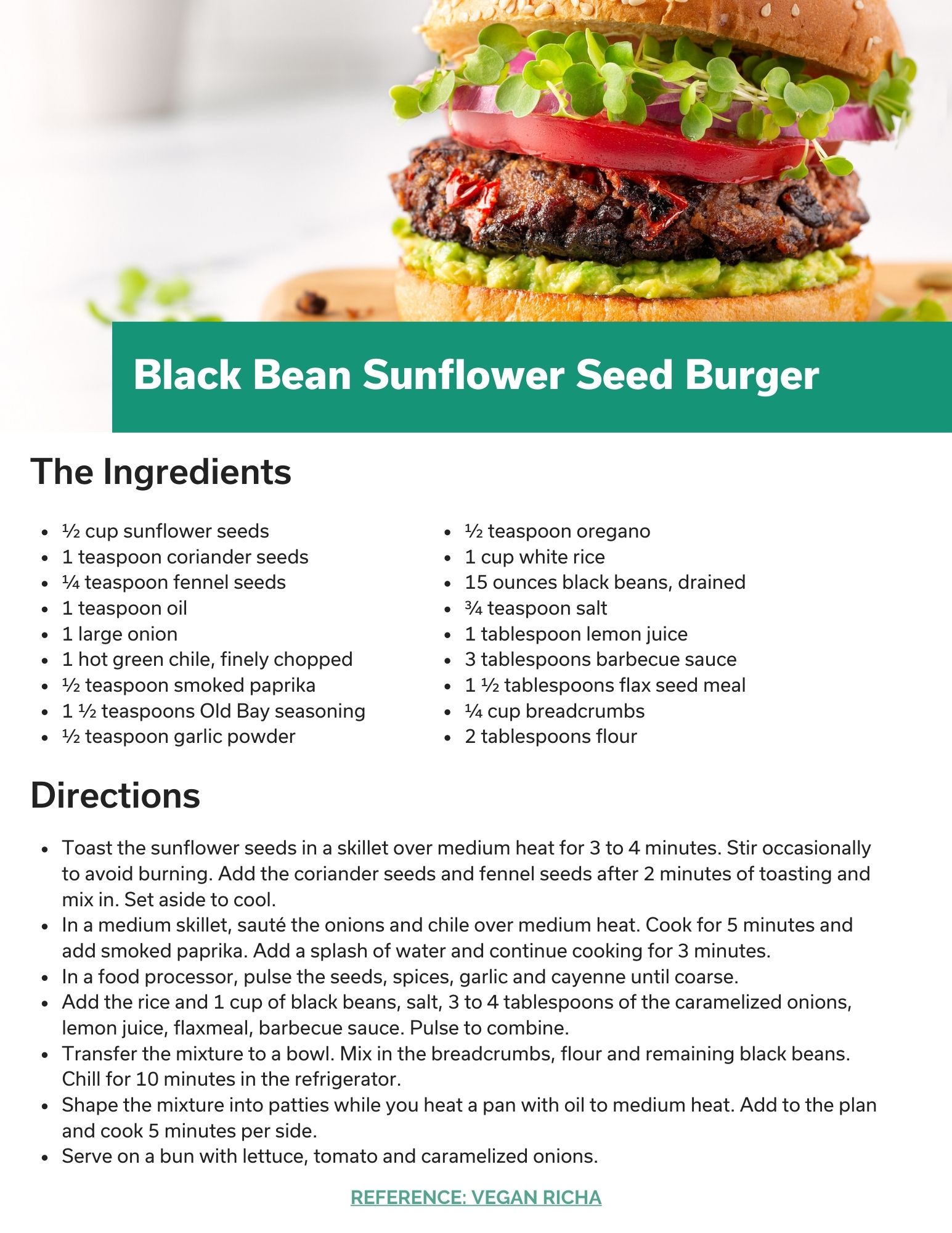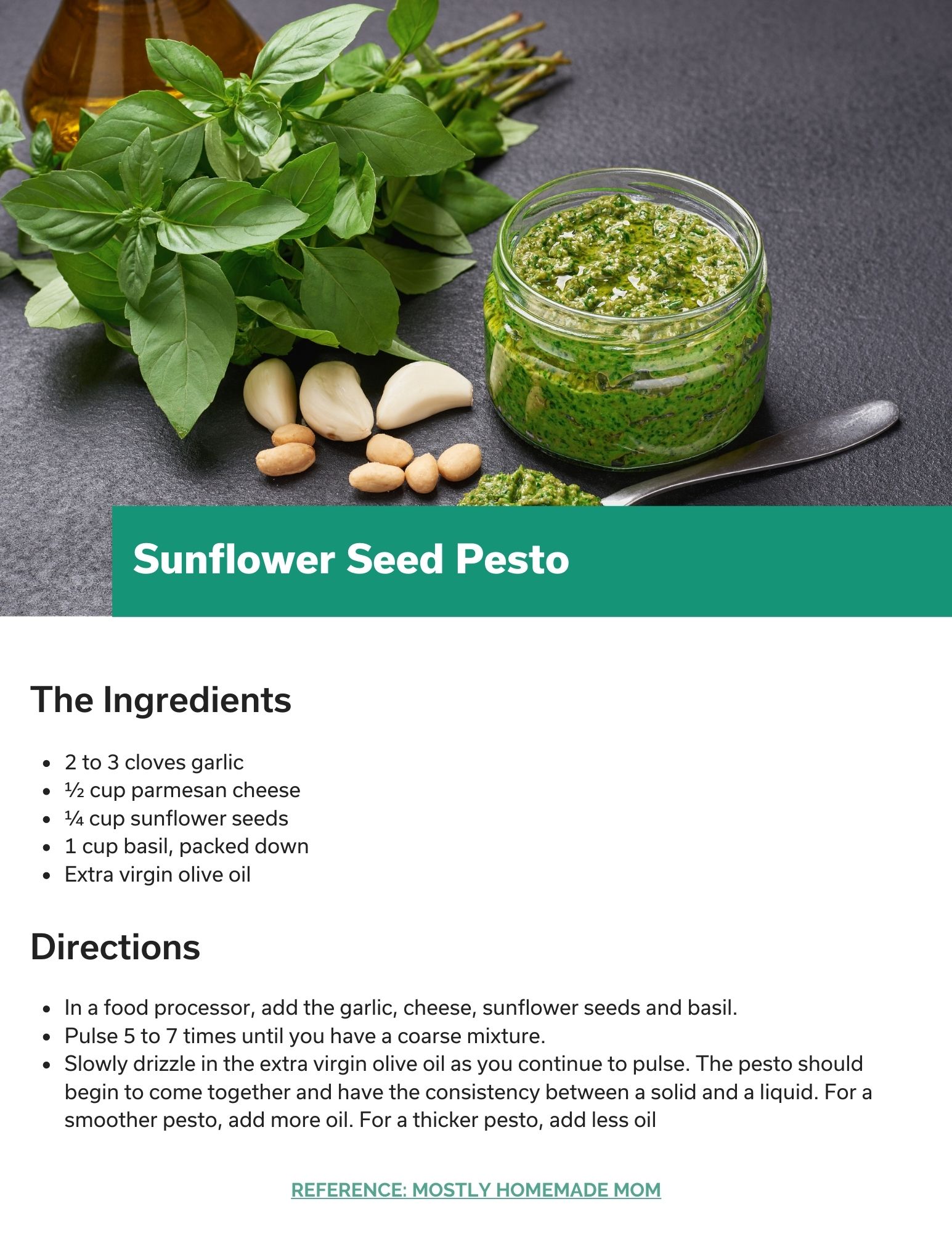Are Sunflower Seeds Good for You?
Posted in

Years ago, the interactions most people had with sunflower seeds likely came at a baseball field. Much like bubble gum, eating and cracking sunflower seeds on the diamond was a rite of passage of sorts. Nowadays, sunflower seeds – and most other seeds for that matter – have become a more mainstream culinary source of snacking and as a complement to various dishes.
Despite the rise in popularity – grocery giant Whole Foods named it one of the top 10 food trends for 2022 – many people are still curious about the health benefits of sunflower seeds and if they are good for you. To help you on your food journey, we set out to learn more about these seeds.
What are sunflower seeds good for?
Those bright, yellow sunflowers you see in the summer are more than a pretty sight to look at. At the center of the flower is where the seeds come from.
Like many other seeds and nuts, sunflower seeds are a good source of protein (10 grams per ounce) and are also high in fat and calories (14.4 grams of fat and 165 calories per ounce).
But those nutrition figures only tell part of the story. Of the 14.4 grams of fat in each serving, just 1.2 grams come from saturated fat. In other words, sunflower seeds are high in unsaturated fat – 6.5 grams of polyunsaturated fat and 5.2 grams of monounsaturated fat.
These fats are known as “good fats” since they can help lower triglycerides and LDL (bad) cholesterol levels. Polyunsaturated fats also help produce hormones responsible for blood clotting and muscle movement.
Omega 3 and omega 6 fatty acids are two types of polyunsaturated fat known as essential fats. However, the body doesn’t make them so you must get them from the foods you eat.
Even with the benefits, fat is still fat, so you should eat sunflower seeds in moderation to avoid weight gain.
Sunflower seeds nutrition
Sunflower seeds are high in omega 6 fatty acids, with one serving including 10.6 grams. Linoleic acid, a type of omega 6 fatty acids, is prominent in sunflower seeds. Linoleic acid is converted to gamma-linolenic acid, a fatty acid that may help reduce inflammation.
In addition to the presence of healthy fats, sunflower seeds are also high in several important vitamins and minerals. Most notably, a single serving of seeds provided 47 percent of the recommended daily value of vitamin E. This antioxidant is vital to your vision and skin health while also benefiting your brain and blood. It may also help reduce your risk of heart disease.
Here is a full list of vitamins and minerals in a 1-ounce serving of sunflower seeds.
Minerals
- Magnesium: 23 percent of the recommended daily value (DV)
- Phosphorus: 18 percent DV
- Copper: 25 percent DV
- Manganese: 27 percent DV
- Selenium: 21 percent DV
- Zinc: 9 percent DV
Vitamins
- Vitamin E: 47 percent DV
- Thiamin: 28 percent DV
- Folate: 19 percent DV
- Vitamin: B6 16 percent DV
- Niacin: 12 percent DV
How many carbs in sunflower seeds?
An ounce of sunflower seeds has 10 grams of carbohydrates. While it isn’t exactly a low-carb snack, a third of the carbs (3.1 grams) come from dietary fiber, accounting for 10 percent of the recommended daily value.
Dietary fiber is important because your body can’t break it down, meaning it passes through your digestive system unprocessed to bulk up and soften your stool. It also helps you feel fuller for longer and regulates your body’s use of glucose (blood sugar).
Are sunflower seeds good for diabetics?
Some research on sunflower seeds has pointed to health benefits for people with diabetes. The fatty acids, such as chlorogenic acid, in sunflower seeds help increase insulin levels, which in turn helps decrease blood sugar levels.
A study on the relationships between certain fats and glucose and insulin levels found swapping out carbohydrates for polyunsaturated fat, like those in sunflower seeds, lowered the average blood sugar levels and fasting insulin. Further, eating foods with polyunsaturated fat instead of saturated fat saw a similar effect.
How to cook with sunflower seeds
There are two types of sunflower seeds grown. Sunflower seeds with a solid black shell are pressed and extracted for their oils. You may also notice them in bird feeders. The types grown for food have a black and white hull.
As with other nuts and seeds, you can either buy sunflower seeds with the hull or shelled. When used for food, sunflower seeds are versatile. Many people prefer the taste of sunflower seeds over other seeds, such as flaxseeds, chia seeds, pumpkin seeds and hemp seeds.
Some common uses of sunflower seeds include:
- Adding to breads or baked goods
- Garnish on salads
- Topping on yogurt
- Protein bars
- Crackers
- Sunflower seed butter
- Sunflower seed flour
Of those uses, sunflower seed butter and sunflower seed flour have taken off recently. Notably, sunflower seed butter is a popular alternative for children with a peanut allergy. A simple swap of peanut butter for sunflower seed butter makes for a great pairing with jelly for a sandwich. Ben & Jerry’s, a popular ice cream brand, recently created a non-dairy frozen dessert using sunflower butter.
Sunflower seeds, when processed finely, can also be used as a grain-free flour alternative. In fact, grocery stores have started carrying sunflower seed flour. You can make sunflower seed flour at home by pulsing the seeds in a food processor until they resemble fine sand.
If you choose to buy sunflower seeds, know the high fat content of sunflower seeds makes them more prone to spoiling, so be sure to store them properly to avoid turning rancid. Here’s a tip: freeze them in a storage bag between uses.
Sunflower seed recipes
Sunflower seeds aren’t just for an afternoon snack. They are versatile enough to mix in with a dinner item, a side dish or even as a crunchy addition to your breakfast.
Here are three recipes to try using sunflower seeds.
Black Bean Sunflower Seed Burger
Veggie burgers can be boring, but the addition of sunflower seeds and smokey caramelized onions is just enough to interest your taste buds. Between the black beans and sunflower seeds, you won’t feel guilty eating this burger as it is loaded with dietary fiber.
Sunflower Seed Pesto
Traditional pesto is a combination of pine nuts, basil, cheese and extra virgin olive oil. Pine nuts are expensive, though, so many pesto recipes use cheaper alternatives such as walnuts or almonds. Now, sunflower seeds have entered the conversation. The sunflower seeds add a hint of nuttiness but aren’t too overpowering to take away from the star of the show – the basil.
Pomegranate Yogurt Bowl
For people who like texture, the smooth nature of yogurt is just begging for something crunchy. Granola is a popular choice for this, but it is typically full of added sugars. Enter sunflower seeds, which offer both texture with the added benefit of fiber, vitamins and minerals.
Stay up to date with the latest news and health trends by visiting the INTEGRIS Health For You blog.






